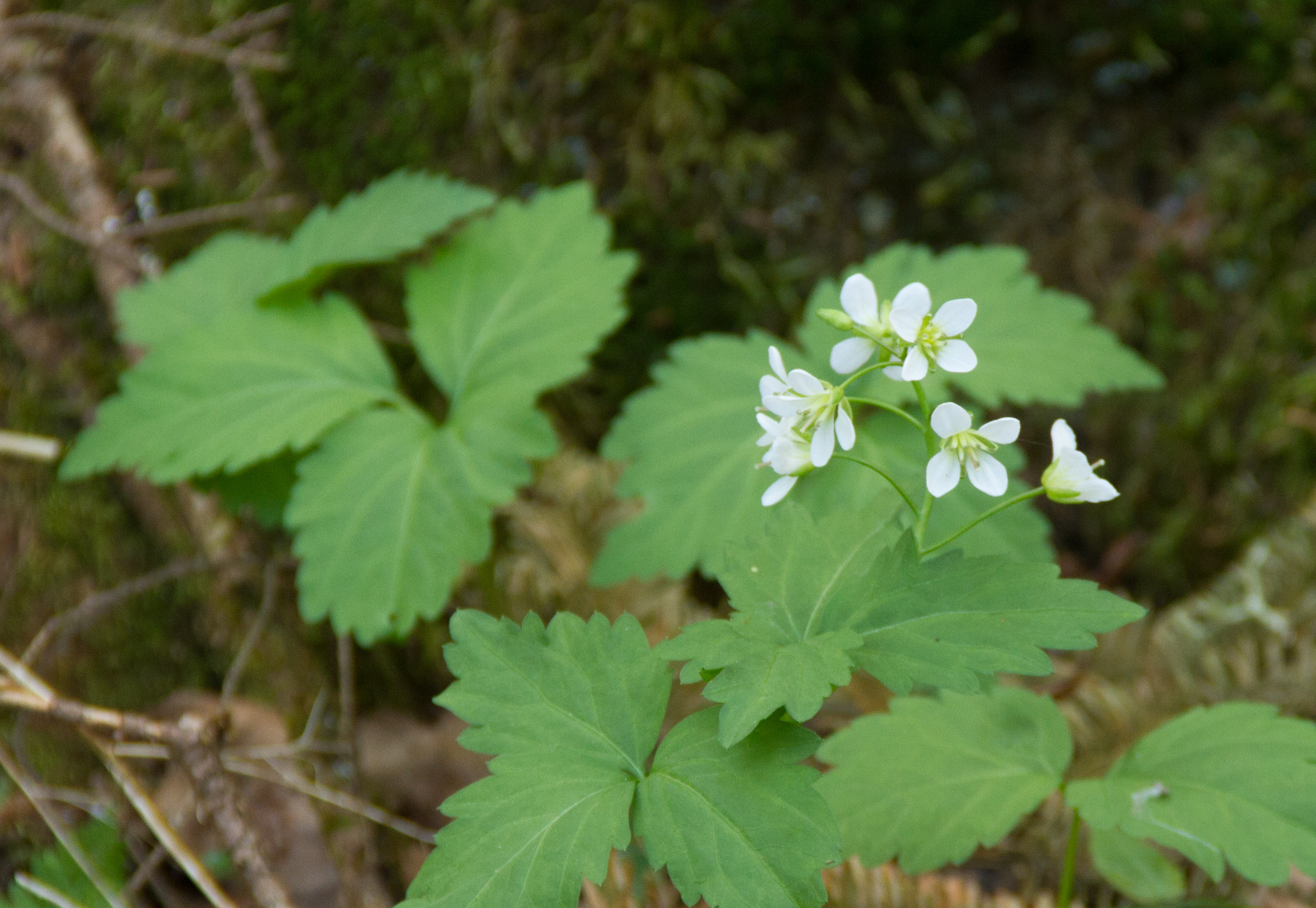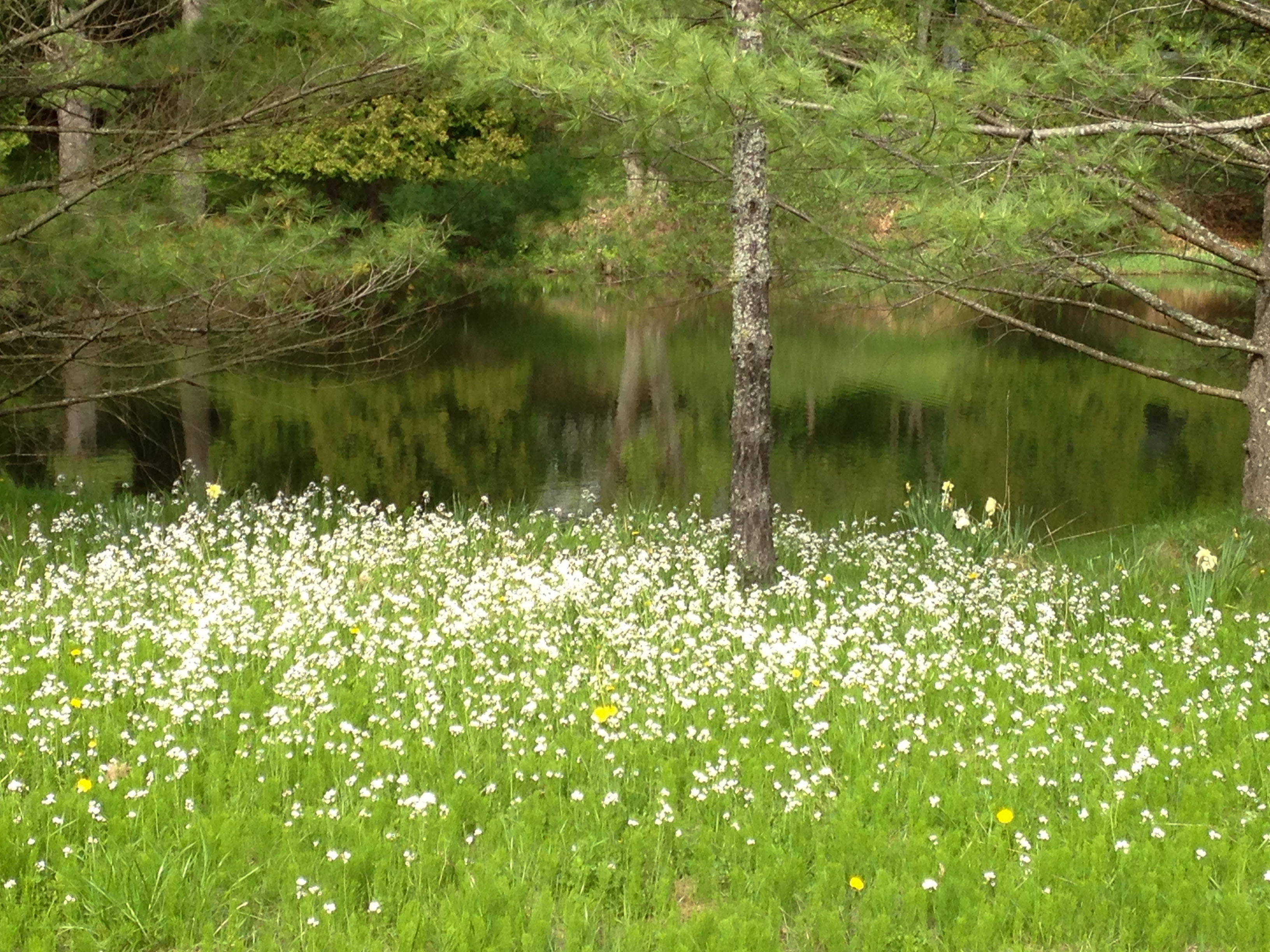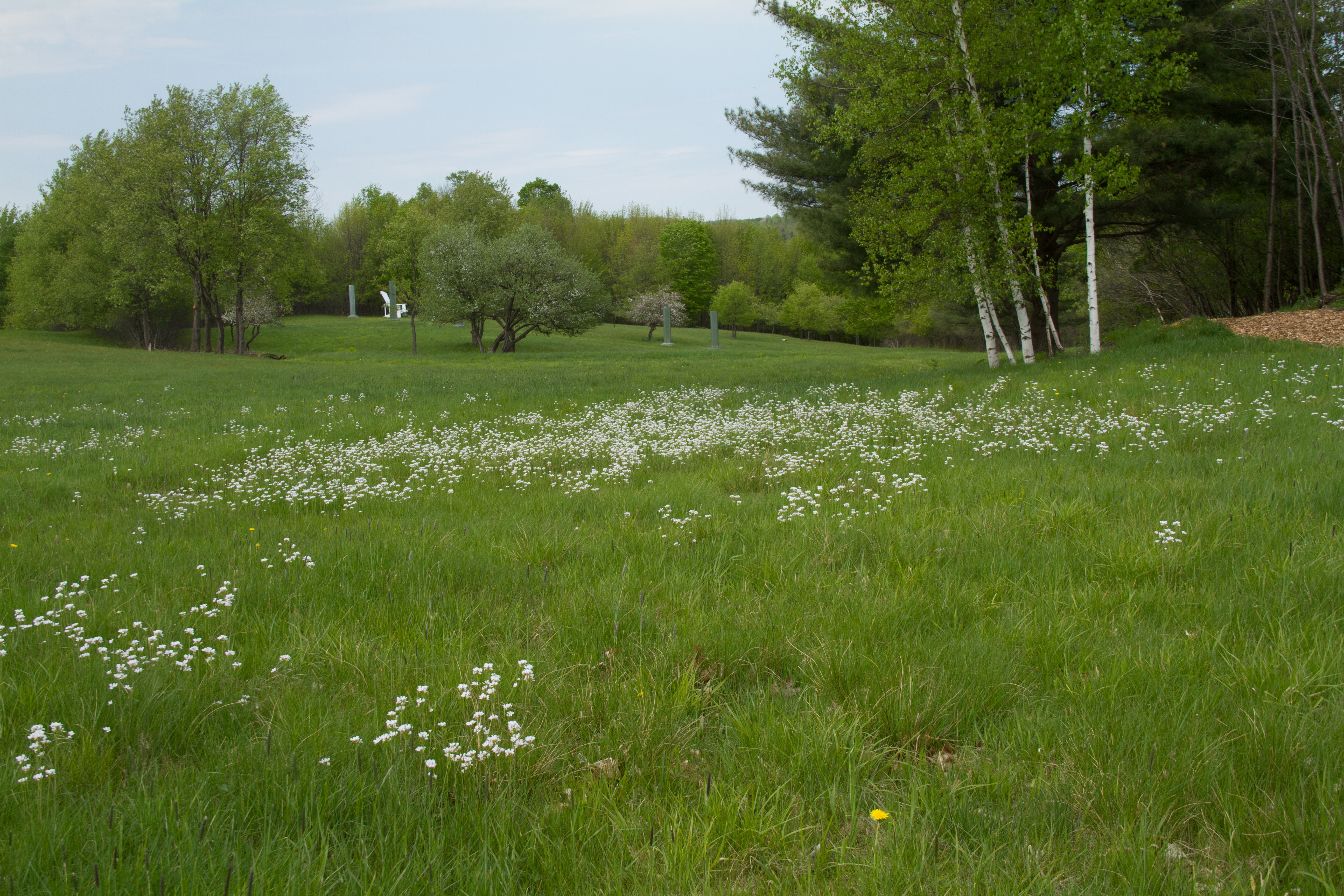I saw this wildflower in the woods last week and was surprised to learn its botanical name, Cardamine diphylla.

I was surprised because only a week or so ago, I looked up the name of another plant, now growing in damp areas in the garden and in the fields at Glen Villa. Its botanical name is Cardamine pratensis.

Lady’s smock or milkmaids is growing beside the Glen Villa pond. It has bloomed for several weeks.
What is the relationship between the two Cardamines? Are they first cousins or distant relatives? Or, as Shakespeare would have us ask, do their names make them enemies?
Cardamine diphylla is a spring woodland plant found in moist woodlands in most of eastern North America. In Quebec it blooms in mid to late May, and into June in cooler years. The word diphylla means the plant has two leaves or leaflets.
Cardamine pratensis is an alien, native throughout most of Europe and Western Asia. The word pratensis, Latin for meadow, identifies its preferred location. It blooms when cuckoos arrive in the U.K., which explains one of its common names, cuckoo flower. Other common names are lady’s smock, milkmaids and mayflower.
C. pratensis is a food plant for the orange tip butterfly, and its botanical name (Anthocharis cardamines) marks that connection. (Since humans once used it as a substitute for watercress, I suppose it might have been called Anthocharis hominis.)
In folklore the flower was said to be sacred to fairies; because of that, it was unlucky to bring it indoors and the flowers were never used in May garlands.

Milkmaids are happily growing in the field in front of Lilac Cottage.
The native plant, Cardamine diphylla, goes by the name crinkle root, or pepper root, or (less colourfully) broadleaf toothwort. Like lungwort or butterwort, the ‘wort’ in its name suggests it was once used as food or medicine — ‘wort’ comes from an old German word related to ‘root.’
Broadleaf toothwort or (my favourite) crinkle root, was used by many indigenous people in North Ameria. The Abenaki who lived in my part of Quebec used it as a condiment. The Algonquin used it to treat fevers and heart disease. The Iroquois chewed the raw root as a remedy for stomach gas and drank a cold infusion of the roots for “when love is too strong.”

Does anyone know why an infusion made with Cardamine diphylla would cool the blood?
What unites these plants, apart from their ‘surname’? Both have small white flowers with four petals, and are members of the mustard family, which includes all plants with four-petaled flowers. But the mustard family is large, and the genus Cardamine grows worldwide in diverse habitats. In northeastern America, there are 15 species with that name. Looking at photos, it is easy to see family resemblances between some, but as with families in general, other members look quite different.
Less scientifically, both of the Cardamines growing at Glen Villa are edible, either by insects and humans. I’m not planning to serve either at dinner, though — the native plant’s most frequently used name is bittercress.






